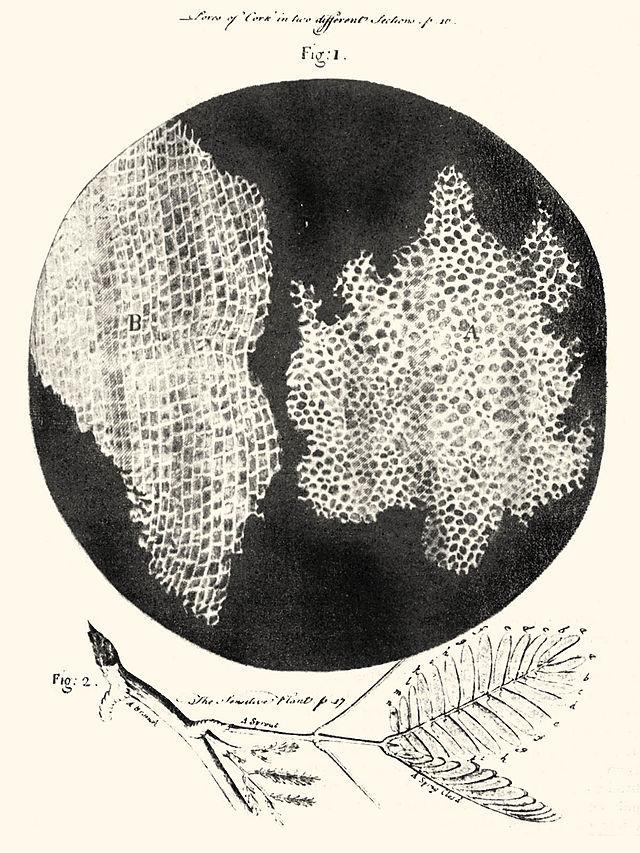Robert Hooke

- Born
- 18 July 1635
- Died
- 3 March 1703 (age 67)
Robert Hooke was a British polymath whose interests varied from physics and geology to architecture. His notable contribution to biology was the observation of cells under a microscope, their description and naming.
Born on the Isle of Wight, Robert Hooke was a quick learner who tried his hand at making mechanical toys and models at a young age. He went on to study at Oxford University, impressing scientists there with his experimental designs and building of equipment. He was appointed the curator of experiments of the Royal Society two years after it formed in 1660.
Famous for his publication ‘Micrographia’, Hooke used his 1665 book to document his findings using a microscope. In one such study he observed the structure of cork (see photo below for Hooke's drawings) and found that it resembled the box-like layout of rooms, or cells, of a monastery. And so the term 'cell' was formed and created a milestone in biological investigations.
 Hooke also used microscopes to describe flies, feathers and snowflakes. Notably, he was the first person to look at fossils under a microscope. He identified them as relics of prehistoric life and, looking at animals and plants that had by then become extinct, he became one of the first advocates of evolution.
Hooke also used microscopes to describe flies, feathers and snowflakes. Notably, he was the first person to look at fossils under a microscope. He identified them as relics of prehistoric life and, looking at animals and plants that had by then become extinct, he became one of the first advocates of evolution.
Hooke was as much of an aficionado with microscopes as he was with telescopes. He provided detailed sketches of Mars, discovered one of the stars in the constellation of Orion and attempted to show that the Earth and Moon follow an elliptical path around the Sun. He was also a pioneer of what is termed ‘Hooke’s Law’. The principle of elasticity, Hooke's Law says that the extension of a spring is proportional to the weight suspended from it.
By the help of Microscopes, there is nothing so small, as to escape our inquiry; hence there is a new visible World discovered to the understanding.
Robert Hooke, Micrographia, 1665
The Great Fire of London in 1666 marked a change in direction for Hooke’s career. Along with the architect and Royal Society founder Christopher Wren, he worked to assess the damage caused to the streets of London and to redesign them adding another area of work to his highly regarded scientific discoveries.
Hooke died at the age of 62 in London on 3rd March 1703.



